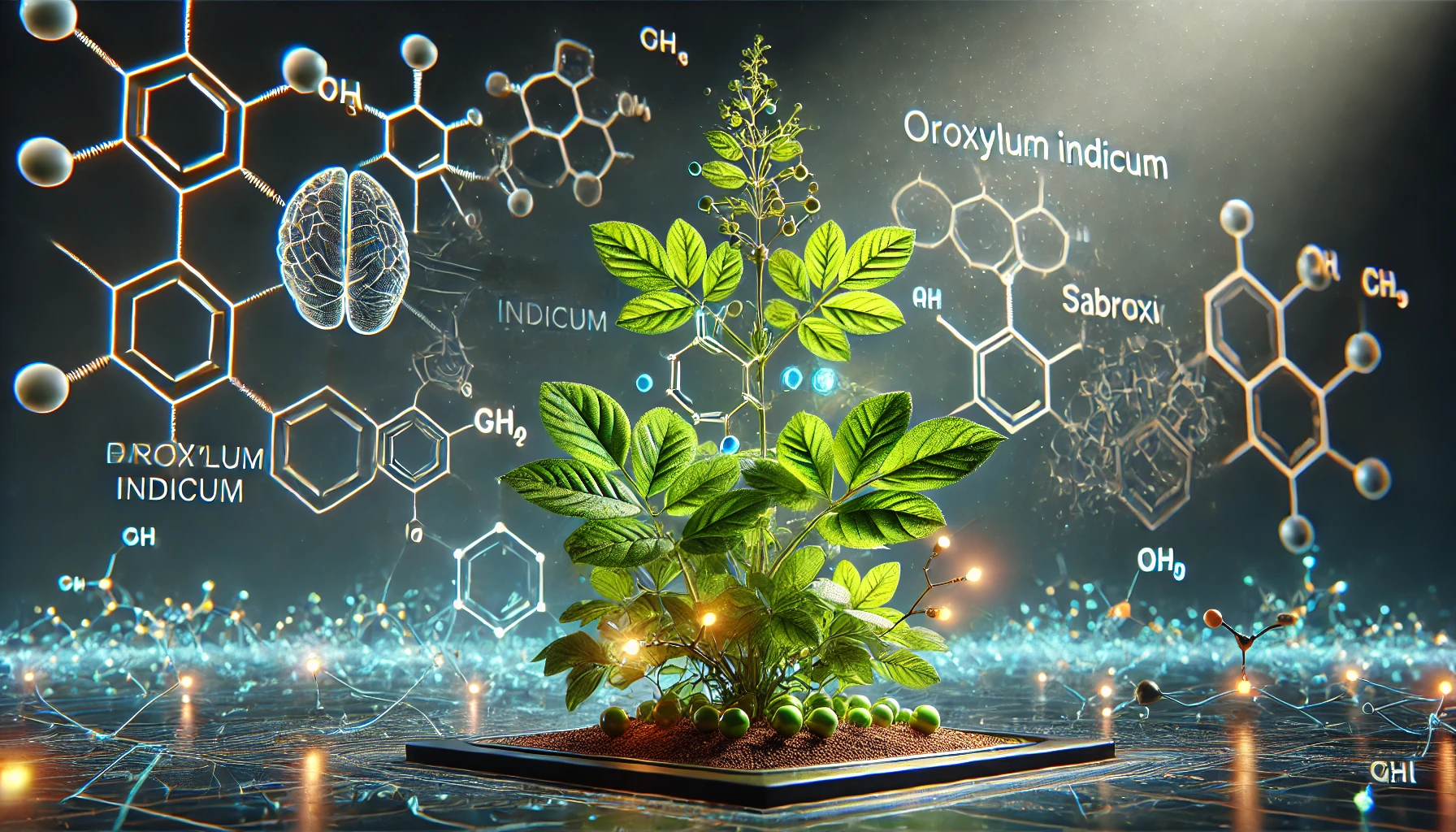

Huperzine A
- Category: Herbal extracts
Quantity
| Quantity | Discounted price | DISCOUNT |
|---|---|---|
| 3-5 | €14.20 | 5%€0.75 |
| 6-9 | €13.75 | 8%€1.20 |
| 10+ | €13.45 | 10%€1.50 |
Change your country
- Your Biohacking Experts.
- Mo-Fr Same day shipping for orders before 17:00.
- Free shipping for orders above 75eu.
- Superior Quality high purity extracts and compunds.
- Quantity based discounts applicable.
Biohacking Core Huperzia Serrata Extract Capsules (100µg Huperzine A)
Product Overview
Biohacking Core offers Huperzia Serrata capsules, a dietary supplement featuring a standardized extract from the Huperzia serrata plant, also known as Chinese club moss. This plant is a natural source of Huperzine A, an alkaloid compound.
Our supplement provides a precise, controlled daily dosage of 100 micrograms (µg) Huperzine A per capsule, derived from 10 mg of Huperzia serrata extract standardized to 1%, without added stimulants or artificial additives.
Key Features
- Provides 100 µg of Huperzine A per capsule.
- Standardized extract (1%) from Huperzia serrata.
- Quality verified by HPLC testing for consistent potency.
- Extensively tested for heavy metals and microbial purity.
- Non-GMO and suitable for vegans.
- Manufactured in the EU.
Ingredients & Supplement Facts
- Serving Size: 1 capsule
- Servings Per Container: 90
- Amount Per Serving:
- Huperzia Serrata Extract (standardized to 1% Huperzine A): 10 mg
- Providing Huperzine A: 100 µg
- Other Ingredients: Microcrystalline Cellulose (filler), Vegetable Capsule Shell (Hypromellose).
Suggested Use
Take 1 capsule daily, or as directed by a healthcare professional. Consistent daily intake is recommended.
Quality & Purity Assurance
Biohacking Core utilizes strict quality control and advanced manufacturing processes. Each batch is produced in a certified facility and rigorously tested.
- Standardized Potency: Verified by HPLC (≥ 1.05% Huperzine A).
- Heavy Metal Tested: Confirmed low levels (Lead < 0.7 ppm, Cd < 0.3 ppm, As < 0.5 ppm, Hg N/D).
- Microbial Purity: Tested for low counts (TPC < 150 CFU/g, Y&M < 50 CFU/g) and absence of pathogens (E. coli, Salmonella negative).
- Advanced Extraction: Multi-step purification process.
- Authenticity Verified: Trace Huperzine B confirms source.
- Non-GMO & Vegan: Suitable for vegans, uses plant-based capsules.
Packaging & Storage
- Packaging: 90 capsules in a sturdy plastic bottle, securely sealed.
- Storage: Store in a cool, dry place, away from direct sunlight and moisture. Keep bottle tightly closed. Keep out of reach of children.
Warnings & Cautions
- For adult use only.
- Consult your healthcare provider before using this product, especially if pregnant, nursing, taking medication (particularly anticholinergic or cholinergic drugs), or have a medical condition (e.g., epilepsy, heart conditions, asthma, gastrointestinal issues).
- Discontinue use if adverse effects occur (e.g., nausea, dizziness, sweating).
- Note: Some national health authorities (e.g., RIVM in the Netherlands) have issued advice regarding potential risks associated with Huperzia serrata extracts.
Disclaimer
This product is a dietary supplement and is not intended to diagnose, treat, cure, or prevent any disease. It should not be used as a substitute for a varied and balanced diet or a healthy lifestyle. Do not exceed the recommended daily dose.
Huperzia serrata – Huperzine A: A Scientific Overview
Introduction
Figure: Illustration of the firmoss Huperzia serrata (Chinese club moss), the natural source of Huperzine A. Huperzine A (HupA) is a naturally occurring alkaloid compound originally isolated from the club moss Huperzia serrata in the 1980s1. The H. serrata plant has a history of use in traditional Chinese medicine (TCM), known as Qian Ceng Ta (“Thousand Layer Tower”), where it was used in herbal remedies for ailments such as bruises, swelling, and fever1. Modern interest in Huperzine A began when researchers identified it as a bioactive constituent responsible for some of the herb’s effects, notably its influence on the nervous system. Today, Huperzine A is available internationally as an over-the-counter dietary supplement, often marketed for memory support and cognitive health3. This introduction provides a neutral, evidence-based overview of Huperzine A, avoiding any health claims and focusing on its chemical nature and context.
Chemical Classification and Structure
Huperzine A is classified as a sesquiterpene alkaloid (a nitrogen-containing terpenoid) belonging to the lycopodium alkaloid family1. In chemical terms, it is part of the lycodine subclass of Lycopodium alkaloids found in club moss species1. Huperzine A’s molecular formula is C15H18N2O, and it has a molecular weight of about 242.3 g/mol7. The compound features a complex polycyclic structure with a fused bicyclic ring system and a pyridine (pyridone) nucleus. Its full systematic name, using IUPAC nomenclature, is (1R,9R,13E)-1-amino-13-ethylidene-11-methyl-6-azatricyclo[7.3.1.02,7]trideca-2(7),3,10-trien-5-one7. In simpler terms, the molecule contains three interconnected rings and a tertiary amine functional group. Several related compounds occur in the same botanical family, including Huperzine B, an analogous alkaloid with a similar backbone structure2. These alkaloids are stereoisomers or congeners that share the lycopodium alkaloid scaffold. Figure 1 below shows a 2D chemical structure of Huperzine A (with atoms labeled by element). [Figure 1: see attached structure image].
Dietary Sources and Natural Occurrence
Huperzine A is not widespread in the plant kingdom but is concentrated in certain primitive fern-allies (club mosses). The primary natural source is Huperzia serrata (Chinese club moss), which contains HupA in its leaves and stems, though typically at very low levels (on the order of 0.01–0.1% of the plant’s dry weight)1. Because the raw plant yields only trace amounts of the alkaloid, large quantities of dried Huperzia material are required to obtain meaningful amounts of Huperzine A. In addition to H. serrata, only a few related species produce HupA in notable quantities; these include other Huperzia species and members of the closely related Phlegmariurus genus. For example, studies have detected Huperzine A in Huperzia herteriana, H. selago, H. pinifolia, H. ovatifolia, as well as Phlegmariurus carinatus and P. mingcheensis, among others5. Even in these plants, the HupA content can vary based on species, geographic origin, and plant part. Notably, Huperzia serrata itself is not a common dietary plant—its use is mostly in traditional medicine or as a source for extraction. Therefore, humans do not obtain Huperzine A through ordinary food consumption. The presence of HupA in the diet is almost exclusively from intentional intake of Huperzia extracts or purified Huperzine A in supplement form. Cultivation of H. serrata and related clubmosses for herbal use is one means of sourcing HupA, though these plants grow slowly. Some efforts have explored tissue culture or fermentation methods to produce Huperzine A, but the compound’s natural occurrence remains limited to the specific genera mentioned.
Biochemical Role and Physiological Presence
Huperzine A has no known physiological role in humans and is not produced endogenously; it exerts effects only when introduced from external sources (such as the herb or supplement). Biochemically, Huperzine A is best characterized as a potent reversible inhibitor of the enzyme acetylcholinesterase (AChE)3. By binding to AChE, HupA prevents the enzyme from breaking down the neurotransmitter acetylcholine, which leads to elevated acetylcholine levels in synapses. This mechanism of action is similar to that of certain drugs used for Alzheimer’s disease (which aim to boost cholinergic transmission by inhibiting AChE). Huperzine A readily crosses the blood–brain barrier and can inhibit acetylcholinesterase within the central nervous system7. In addition to its cholinergic activity, Huperzine A also acts as an antagonist at N-methyl-D-aspartate (NMDA) receptors, a type of glutamate receptor involved in excitatory signaling6. This NMDA receptor modulation suggests that HupA may reduce excitotoxic effects of glutamate in neurons, though this is a pharmacological observation rather than an established physiological “role.” Importantly, Huperzine A is not a vitamin or nutrient required for any normal body function; its significance lies in these pharmacodynamic actions. When ingested, HupA is absorbed through the gastrointestinal tract and distributed through the bloodstream to various tissues. It has been observed to preferentially inhibit acetylcholinesterase in the brain more than in peripheral tissues, showing selectivity for AChE over related enzymes like butyrylcholinesterase1. This selectivity might contribute to a relatively favorable side effect profile at low doses (since it spares some peripheral cholinergic function), although side effects can still occur (see “Safety” below). In summary, Huperzine A’s biochemical impact is that of an exogenous neuroactive compound: after absorption, it transiently increases acetylcholine signaling and modulates glutamatergic receptors, but it is not utilized or produced by the body on its own.
Metabolism and Excretion
Human pharmacokinetic studies indicate that Huperzine A is eliminated largely unchanged by the body. After oral administration, HupA is well-absorbed and reaches peak plasma concentrations within about 1 hour (time to peak can vary with dosage form)1. Once absorbed, a significant portion of the compound remains unmetabolized. In an open-label study in elderly volunteers given a single 0.1 mg oral dose of Huperzine A, roughly 35% of the administered dose was recovered intact in the urine over 48 hours4. This finding suggests that renal excretion of the unchanged parent compound is a major elimination route. In vitro experiments with human liver microsomes have shown that Huperzine A is not readily broken down by common drug-metabolizing enzymes, and it exhibits negligible inhibitory effect on the major cytochrome P450 enzymes at typical circulating concentrations4. Thus, HupA undergoes minimal hepatic metabolism in humans – the liver does not substantially alter its structure before it is excreted4. Limited studies in animals have identified cytochrome P450 1A2 as one enzyme capable of metabolizing Huperzine A, with possible minor contribution from CYP3A isoforms, but this metabolic pathway appears to be slow in humans4. The primary elimination pathway is through the kidneys: Huperzine A is filtered out of the blood and into the urine. The elimination half-life of Huperzine A in human plasma is on the order of several hours. Reported values range from about 5 hours up to approximately 10–14 hours, depending on the study and dosage1. (Such differences may reflect multi-phase clearance kinetics, where an initial distribution phase is followed by a longer terminal elimination phase.) This half-life means that a single dose of HupA can persist in the body and maintain pharmacological activity for most of a day. No significant accumulation is expected with once-daily dosing, but with multiple doses per day, steady-state levels could be reached after a few days. Huperzine A’s metabolites (if any) have not been reported as major active species; the parent compound is responsible for the observed effects. Ultimately, the compound is excreted primarily in urine, with minor amounts possibly eliminated via bile/feces. Factors like renal impairment could prolong its clearance, whereas enzyme induction is unlikely to significantly affect HupA due to its low metabolism. In summary, Huperzine A’s pharmacokinetic profile is characterized by good oral absorption, widespread distribution (including the brain), minimal biotransformation, and renal elimination with a moderate plasma half-life supporting its short-term presence in systemic circulation4.
Industrial Production Methods
Given the low natural abundance of Huperzine A in Huperzia serrata (and other plants), industrial production relies on specialized methods to obtain sufficient quantities of this compound. One approach is extraction from the natural source. Commercial producers often harvest H. serrata or related species and extract HupA using organic solvents. The plant material is dried and powdered, then subjected to extraction (e.g., with ethanol or methanol), followed by purification steps such as chromatography. However, yields from wild or farmed club moss are extremely low – on the order of a few tens of micrograms of Huperzine A per gram of dried plant (~0.01–0.1% yield)1. This means many kilograms of plant may be needed to produce just a few grams of HupA, making sole reliance on extraction costly and potentially unsustainable. To address this, researchers have developed total synthesis methods to create Huperzine A in the laboratory from simpler chemical starting materials. The complex tricyclic structure of HupA made synthesis challenging, but significant breakthroughs have been achieved. Notably, a research group reported an efficient total synthesis of (–)-Huperzine A in roughly 10 chemical steps starting from the readily available terpene (R)-pulegone2. This synthetic route achieved an overall yield of about 17%, which is considered high for such a complex molecule2. Other synthetic approaches have also been published, including divergent strategies that produce not only Huperzine A but also related alkaloids (like Huperzine B) through shared intermediates2. Two scalable syntheses were noted in the literature by the mid-2010s7, underscoring that production of HupA via chemical synthesis is feasible for industrial purposes. Each method has its pros and cons: extraction yields a naturally derived product but requires extensive botanical resources, whereas total synthesis can produce HupA in a controlled manner but involves multiple reaction steps and reagents. In practice, some supplement manufacturers obtain Huperzine A by extraction from farmed Huperzia moss, while others may use synthetic or semisynthetic HupA to formulate their products. Quality control is important to ensure purity (usually >99% pure HupA is desired for supplements or research), as the extracts can contain other alkaloids like Huperzine B. Advances in biotechnology, such as plant tissue culture or engineered microbes, are also being explored to produce Huperzine A, though these are not yet mainstream. In summary, industrial production of Huperzine A is achieved either by isolating the compound from the Huperzia plant (labor-intensive due to low yield) or by constructing the molecule via multi-step organic synthesis, with the latter approach becoming increasingly efficient in recent years2.
Regulatory and Historical Background
Historical use: The club moss Huperzia serrata has been used for centuries in East Asia as a medicinal herb. Traditional Chinese medicine records indicate use of this plant (often under names like Qian Ceng Ta or Jin Bu Huan) in herbal formulations to “clear the mind” and treat conditions such as inflammation, blood circulation problems, and fever1. These historical uses did not isolate Huperzine A specifically, but they set the stage for scientific interest. In 1986, Chinese scientists first reported isolating Huperzine A from H. serrata and noted its acetylcholinesterase-inhibiting activity1. This discovery led to extensive research into HupA as a potential therapeutic agent for neurological conditions. By the 1990s, Huperzine A had become a subject of pharmacological studies and clinical trials, especially in China. Development and approval: In China, Huperzine A was developed into an approved drug for Alzheimer’s disease and other forms of dementia1. It has been incorporated into prescription medications in China after clinical testing, given its cognitive effects. In contrast, Huperzine A has never been approved as a drug in the United States or the European Union. Instead, in Western countries it entered the market as a dietary supplement (often labeled as a “nootropic” or memory supplement). In the U.S., several companies filed new dietary ingredient notifications with the FDA in the late 1990s to early 2000s to legally market Huperzine A extracted from H. serrata1. These filings acknowledged HupA as a supplement ingredient, not a regulated pharmaceutical. Since then, Huperzine A has been sold in the US and many other countries as an over-the-counter supplement, frequently in the context of brain health products.
Safety and Recommended Dosages
Typical dosages: In dietary supplement products, Huperzine A is provided in microgram (μg) quantities. A common dose range is about 50–200 μg per day for adults, often taken as a single daily capsule or divided into two doses. Clinical research trials in Alzheimer’s patients and other populations have used doses on the higher end of this range: for example, studies have examined 200 μg twice daily (400 μg/day) or even 400 μg twice daily (800 μg/day) to assess cognitive effects9. A 2015 systematic review noted that across several trials, Huperzine A doses varied from 0.2 mg up to 0.8 mg per day (200–800 μg), with an average around 0.37 mg daily in those studies9. These doses, although small in absolute mass, are pharmacologically active. It is generally recommended not to exceed about 300–400 μg per day for self-directed use, in the absence of medical supervision. In China’s medical context, the prescribed doses for dementia have typically been 0.2–0.4 mg/day, cycled with breaks. Safety profile: Huperzine A is a bioactive substance and can cause cholinergic side effects, especially at higher intakes. Because it boosts acetylcholine levels, excessive doses may lead to symptoms of parasympathetic nervous system overactivation. Documented mild-to-moderate side effects include nausea, vomiting, diarrhea, abdominal cramps, increased saliva production (drooling), sweating, slow heart rate (bradycardia), dizziness, and blurred vision3. These adverse effects are similar to those seen with pharmaceutical AChE inhibitors. In general, lower doses such as 50–100 μg are well-tolerated by most people, whereas doses approaching 300+ μg are more likely to produce noticeable effects like nausea or muscle twitching. Severe toxicity is rare when HupA is taken at recommended dosages; however, it can occur with gross overdose. In animal studies, the median lethal dose (LD50) for Huperzine A was reported as about 5.2 mg/kg in mice and 25.9 mg/kg in rats (when administered intragastrically)2. These values indicate a relatively low acute toxicity (for comparison, 5 mg/kg in a 70 kg human would correspond to 350 mg, far above any reasonable exposure). More relevant are the sublethal effects: experiments in rats have shown cholinergic toxicity (tremors, convulsions) at single doses of around 0.3 mg/kg and above2. Safety margins can therefore narrow if high amounts are consumed. Upper limits and regulations: Neither the EFSA nor the U.S. Institute of Medicine has established a formal Tolerable Upper Intake Level for Huperzine A, since it is not an essential nutrient. Nonetheless, risk assessments have been conducted to gauge safe exposure. A review by the Danish food safety authority pointed out that some supplement brands were recommending up to 0.9 mg (900 μg) of Huperzine A per day, a level at which serious adverse effects become possible3. At a dose of 900 μg daily, Huperzine A could cause significant AChE inhibition leading to symptoms like muscle fasciculations, excessive salivation, diarrhea, and in extreme cases, even convulsions or dangerous slowing of heart rate3. The Danish assessment concluded that 2 mg per day (a dose found in certain high-strength products) unquestionably poses a health risk and should be avoided2. Most experts and regulators advise keeping daily intake well below 1 mg. Some countries (or specific manufacturers) have set informal recommended maximums around 200 μg per serving. Consumers are also cautioned not to use Huperzine A continuously for long periods without breaks, partly to avoid potential accumulation or desensitization effects, and partly because long-term safety data are limited. Special populations and interactions: Huperzine A has not been studied in children or during pregnancy in any meaningful capacity, so it is not recommended for use by minors, pregnant women, or breastfeeding mothers. Due to its mechanism, HupA can interact with other substances: combining it with pharmaceutical acetylcholinesterase inhibitors (like donepezil or rivastigmine) could amplify both therapeutic and adverse effects. Likewise, it may counteract anticholinergic medications or interact with drugs that affect heart rate and neurological function. Individuals with conditions such as bradycardia, asthma, or epilepsy should use caution, as excessive cholinergic stimulation can exacerbate these conditions. Importantly, while Huperzine A is marketed for cognitive enhancement, it is not a harmless “vitamin” – it is a potent biochemical agent. Cases of users experiencing severe nausea, faintness, or slurred speech from high doses have been reported anecdotally (and can be explained by its pharmacology). To stay within a safe range, typical nootropic users cycle the supplement (e.g., 2–4 weeks on, then off) and adhere to moderate doses. In summary, Huperzine A can be used safely at low dosages (on the order of a few hundred micrograms), but the margin between an effective dose and one that causes side effects is not large. Users should follow dosing guidelines carefully. No lethal or life-threatening toxicity has been seen at supplement-level doses, yet even mild side effects are a signal to moderate the intake. As always, consulting a healthcare professional before using Huperzine A, especially alongside other medications, is prudent.
Conclusion
Huperzine A is a chemically defined natural product derived from Huperzia serrata with a notable biochemical activity (acetylcholinesterase inhibition) that has made it of interest in both traditional herbal practice and modern neuropharmacology research. This overview has presented factual information on its chemistry, sources, metabolism, regulatory status, and safety profile in a neutral manner. In essence, Huperzine A can be viewed as a phytochemical that straddles the line between “supplement” and “drug” due to its potent effects, and its use should be informed by scientific understanding rather than hype.
This scientific overview has presented chemical, biochemical, and regulatory context without any health claims. The European Food Safety Authority (EFSA) has not approved any health or physiological claims associated with Huperzia serrata – Huperzine A2. Consumers should not interpret this educational information as medical advice or a basis for health decisions. Always consult a healthcare professional before starting dietary supplements or making significant dietary changes. Supplements should complement, not replace, a varied and balanced diet or a healthy lifestyle.
1. Drugs.com. (2020). Huperzine A: Uses, Benefits & Dosage. Drugs.com Herbal Database. Accessed Jan 2025.
2. de Heer, J. A., & de Wit-Bos, L. (2024). Risk assessment of herbal preparations containing Huperzia serrata (RIVM Letter Report 2024-0028). National Institute for Public Health and the Environment (RIVM), The Netherlands.
3. Bredsdorff, L., & Pilegaard, K. (2018). Concern for adverse effects of huperzine A when sold as an ingredient in food supplements. Toxicology Letters, 295(Suppl. 1), S145.
4. Lin, P. P., Li, X. N., Yuan, F., Chen, W. L., Yang, M. J., & Xu, H. R. (2016). Evaluation of the in vitro and in vivo metabolic pathway and cytochrome P450 inhibition/induction profile of huperzine A. Biochemical and Biophysical Research Communications, 480(2), 248-253.
5. Szypuła, W. J., Wileńska, B., Misicka, A., & Pietrosiuk, A. (2020). Huperzine A and huperzine B production by prothallus cultures of Huperzia selago. Molecules, 25(14), 3262.
6. Herbison, A. (Ed.). (2021). Huperzine A Product Monograph. StressMarq Biosciences Inc. (SIH-365 datasheet). Accessed 2025.
7. Wikipedia. (2023). Huperzine A. Wikipedia, The Free Encyclopedia. Accessed 2025.
8. Yang, G., Wang, Y., Sun, J., Zhang, K., & Liu, J. (2017). Pharmacokinetics and tolerability of oral huperzine A in healthy volunteers. European Journal of Drug Metabolism and Pharmacokinetics, 42(1), 65-72.
9. Rafii, M. S., Walsh, S., Little, J. T., et al. (2011). A phase II trial of huperzine A in mild to moderate Alzheimer disease. Neurology, 76(16), 1389-1394.
10. Zhang, X., Zhou, Y., et al. (2013). Pharmacokinetics of huperzine A in human plasma after oral administration. Pharmaceutical Biology, 51(5), 584-588.
Latest Blogs
Stay Informed, Stay Ahead: Discover the Latest Insights in Biohacking

Sabroxy®: Research, Benefits & Effects
Sabroxy® is a relatively new product on the market that's been making some headlines recently. Unlike many popular nootropics, Sabroxy®...
Read More
Biohacking & Neurogenesis: The Essential Connection
Biohacking, or DIY biology, is a buzzword that was popularized over the past decade. In the literal sense of the...
Read More
PrimaVie® Shilajit: Research, Benefits & Effects
The market is full of countless substances touted for their positive impact on brain health, cognition, mood, energy levels, and...
Read More
Social Anxiety & Nootropics: Can They Help?
Regardless of who you are, how confident you consider yourself to be, or how much you communicate with others, you've...
Read More
Biohacking 101: What Is It and Why It Matters
While the term “biohacking” has gained momentum in recent years, its meaning can differ depending on the context in which...
Read More
Vitamin C & Brain Health: Optimize Your Intake
Like most, you’ve probably sought the assistance of compounds to optimize your cognition and brain health. Maybe you struggle with...
Read More
Level Up: Unearth Our Unsurpassed Quality!
CONTACT

0 reviews
Only logged in customers who have purchased this product may leave a review.